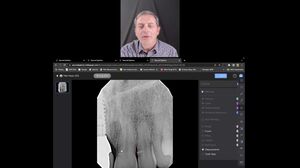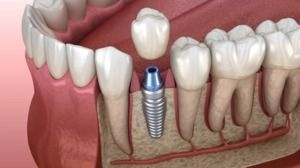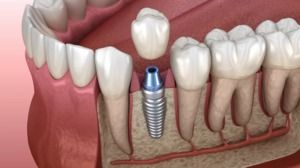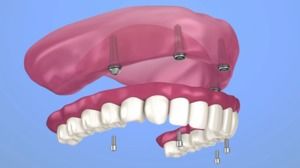Description
Regular brushing and flossing are the best defense against gum disease but it is still a very common condition. If you've noticed inflammation, swelling, or bleeding gums, you may have gingivitis or periodontitis. The dentists at 38th Street Dental can effectively treat gum disease to protect your oral and general health.
View transcript
Gum disease is a disease process caused by the accumulation of plaque and tartar on the root surfaces and the inflammatory response that the body produces as a result of this accumulation. As the inflammation grows and remains there day in and day out, the side effect of that inflammation is damage to the underlying tissues that attach the gums to the teeth.
Well, that first day that you forget to floss, that's when it starts because dental plaque and tartar start to accumulate 36 to 48 hours after the last time you brush or floss. Once that plaque is there, the calcium and phosphate that's in the saliva hardens the plaque and turns it into tartar or dental calculus. Because it's hardened and stuck to the sides of the teeth, the dental calculus or tartar can't be removed with your toothbrush, but instead day in and day out it insidiously grows larger with the accumulation of more bacteria, more calcium, and more phosphate. And it's why gum disease gets worse, because the more tartar that's present, the greater the inflammatory response. So it's something that kind of snowballs.
What if you're in early stages of gum disease? Well, realize that the first stage of gum disease called gingivitis is simply inflammation of the gum tissue or swelling of the gum tissue in response to the accumulation of tartar and plaque, and as long as it hasn't been there for months and months and months, or years and years and years, coming to the dentist and having your teeth cleaned will reset the clock for you.
Once started, the continued allowance of tartar or calculus to be on teeth allows for that inflammatory response to continue, and it will actually cause damage to the tissues that attach to the teeth. And when that occurs, that's when we actually call the situation true gum disease or periodontitis. Your action as a patient needs to be the same, and that is to say if you're seeing bleeding in your gums, you need to come on into the dentist and let us screen you for gum disease. Treatment for gum disease is very simple and most of the time non-surgical. So, if you do see bleeding of the gums, that's a good sign that things aren't right, come on in and we'll give you some advice of whether or not it's gingivitis or periodontitis.




















